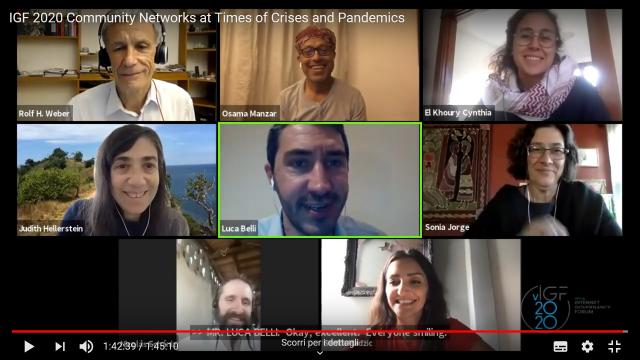Session
Round Table - U-shape - 90 Min
This session will discuss the importance of Internet access and the relevance of community networks as a credible strategy to expand access empowering people, at times of crises. As the recent Covid19 pandemic is tellingly demonstrating, connectivity is becoming increasingly essential for our social, economic, and political lives. Panellists will explore a variety of standpoints discussed by the authors of the DC3 annual outcome (developed in partnership with DCNN): the report on “The Value of Internet Openness at Times of Crisis” The session will have a tripartite structure featuring: 1) Presentations based on the contributions to the DC3 annual outcome report 2) Discussion of the latest community networking evolutions, highlighted by the covid19 pandemic 3) Identification of new challenges and cooperation opportunities to be considered by the future work of DC3
Over the past five years the work of DC3 has directly impacted the way in which stakeholders define shared principles, norms, rules, decision-making procedures, and programmes that shape the evolution and use of the Internet. A clear example is the joint publication of the Community Network Manual by FGV, ITU and ISOC. https://bibliotecadigital.fgv.br/dspace/handle/10438/25696 The book consolidates best practices that shape establishment the evolution of community networks (that in turn shape the evolution of the Internet) and has already influenced national policy development. See the recent adoption (February 2020) of a community network definition by the Brazilian Telecoms regulator (ANATEL), explicitly mentioning and quoting the Community Network Manual. https://www.anatel.gov.br/setorregulado/component/content/article/2-uncategorised/528-redes-comunitarias
All DC3 outcomes and publications are available at http://www.comconnectivity.org/
The proposal aims at discussing the value of community networks to expand access and empower individuals and communities in times of emergencies, such as the covid19 pandemic. This issue is considered highly pressing and timely in many internet governance and policy circles, well beyond the community network community. Participants will discuss concrete initiatives, case studies and innovative approaches to foster meaningful connectivity.
Luca Belli, FGV
- Sonia Jorge, Alliance for Affordable Internet A4AI
- Osama Manzar, DEF
- Jane Coffin, ISOC
- Rolf H. Weber, University of Zurich
- Cynthia El Khoury, APC
- Senka Hadzic, CyberBRICS / Research ICT Africa
- Nicholas Echaniz, AlterMundi
GOAL 4: Quality Education
GOAL 9: Industry, Innovation and Infrastructure
GOAL 10: Reduced Inequalities
